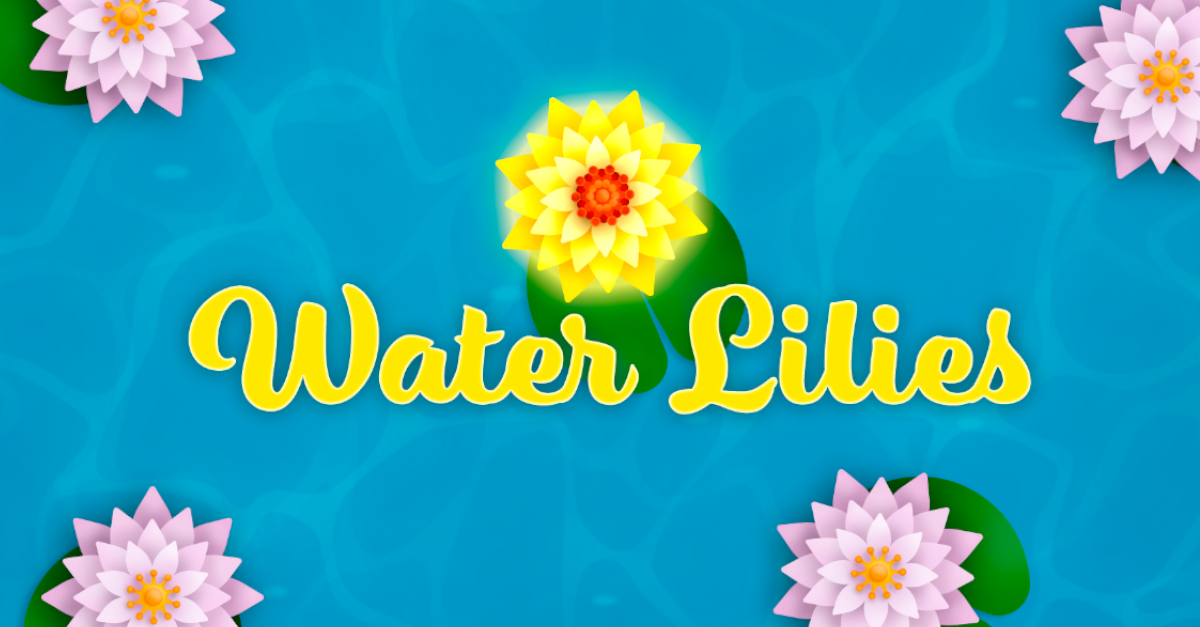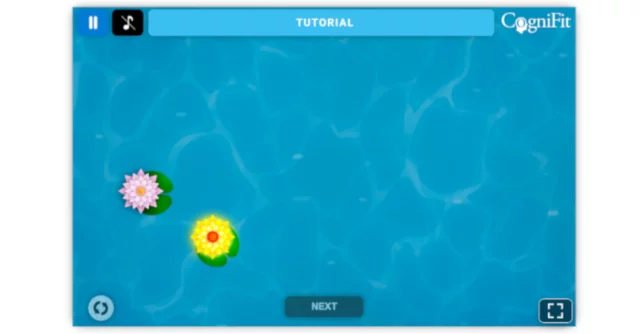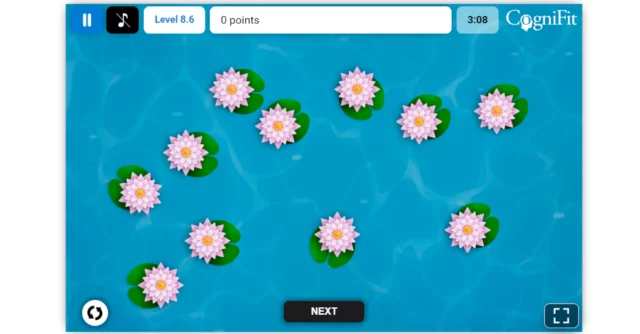
Water Lilies Game – Stimulate 4 Kinds of Memory
Water Lilies is a simple, but beautiful game that uses images, tones, and other clever tricks to help players improve multiple forms of memory. And, as always, as you progress through higher levels, there will be more obstacles put in your way to really give the brain a run for its money.
Let’s take a closer look at what to expect…
How to Play Water Lilies
On lower levels, it’s quite simple. You’ll see a small collection of water lilies (hence the game name). One will light up with a bright glow and give off a beautiful tone. The next lily will do the same but with a different note.
Your job is to remember what you saw and click back in the correct order – replicating the tune. More lilies will appear, therefore making you flex your brain as things get harder. But what happens when you progress to higher levels?
Well, not only are there more lilies to remember, but eventually, you’ll have to remember and “click back” what you saw in REVERSE. There will also be false glowing lilies that will float across the screen to distract you.
It’s no wonder this game is a smorgasbord of cognitive improvement when it comes to memory. Here are the exact parts you’ll be nurturing as you play…

Short-Term Memory
This kind of memory is exactly what the name suggests. It’s the part of the mind that lets us hold onto a bit of information for a short amount of time. Afterward, there are two options – go into long-term memory or disappear.
Many people worry that their ST memory is poor. But it’s actually finite for everyone. The general ability is to retain 7 elements, with a variation of 2, and for around 30 seconds.
You can exercise this cognitive ability or learn tricks to make it a bit better, but not to the point where it’s something out of a movie. It will always be limited since it’s more of a doorway into long-term memory.
Visual Short-Term Memory
VSTM is part of our Short-Term Memory. It acts in very much the same way, but with shapes and colors, etc. It’s an incredibly important skill with reading and notes because languages fall within the “shape” category. So, don’t be so quick to disregard this brain function.
We also need it with driving, many aspects of our jobs, even recognizing faces.
One common disorder someone can have with VSTM can be dyslexia.
Non-verbal Memory
Nonverbal memory is the ability to code, store, and recover information about faces, shapes, images, songs, sounds, smells, tastes, and feelings.
Nonverbal memory is what makes it possible to retain and remember content without words (neither written nor spoken). This is an important skill, as we use it in a number of daily activities. Jobs like architecture, designing, musician or artist need this.
You use nonverbal memory when remembering how to a new restaurant or friend’s house. A common problem in these types of circumstances is if you don’t follow the route correctly or if you don’t remember if you passed the sign that tells you whether you can pass other cars or not.
You also use nonverbal memory in your daily lives, like when you try to remember the melody of a song, someone’s face, or a specific smell.

Working Memory
Working memory (or operative memory) allows us to store and manipulate temporary information and carry out complex cognitive tasks like language comprehension, reading, learning, or reasoning. It’s also a kind of Short-Term memory.
Characteristics of working memory:
- Its capacity is limited. We are only able to store 5-9 elements at a time.
- It is active. It doesn’t only store information, it also manipulates and transforms it.
- Its content is permanently being updated.
- It is modulated by the dorsolateral frontal cortex.
Working memory refers to the ability that allows us to retain the elements that we need in our brain while we carry out a certain task. Thanks to working or operative memory, we are able to:
- Integrate two or more things that took place close together. For example, remembering and responding to the information that was said during a conversation.
- Associate a new concept with previous ideas. It allows us to learn
- Retain information while we pay attention to something else. For example, we are able to prepare the ingredients that we need for a recipe while we talk on the phone.
Bonus Skill – Planning!
Yes, we said there were four kinds of memory players would be using. But there’s also a fifth cognitive function – Planning! This fundamental skill forms part of our Executive Functions, which is what lets us make plans and set/reach goals.
Without it, we would have trouble making decisions, be unable to foresee consequences, be unable to know how long something would take to finish, be forgetful, have poor creativity, have trouble dealing with change, and so much more!
Water Lilies Conclusion
Some games cover a wide variety of cognitive skills. However, this CogniFit game has a unique focus on one cluster that some people might find useful. So, why not go ahead and give it a try?
Also, did you know that all it takes is 3 sessions a week and 20 minutes per session to give your brain the exercise it needs? Go to CogniFit.com to check out more free games!














